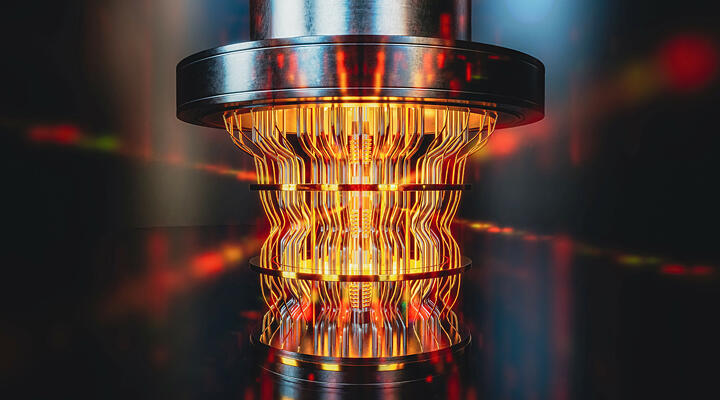
While quantum simulations are expected to play an important role in clarifying complex quantum phenomena in nature, current quantum simulation devices face many experimental limitations, such as cooling temperature limits and noise interference from the environment. Existing studies have proposed a technique called "purification," wherein entanglement measurements are performed for different quantum states and results are obtained by overcoming experimental limitations. However, this technique has faced an issue in that the number of measurements increases exponentially as the system size increases.
Assistant Professor Hideaki Hakoshima of the Graduate School of Engineering Science/Center for Quantum Information and Quantum Biology at Osaka University, Dr. Suguru Endo and Dr. Kaoru Yamamoto of NTT Computer and Data Science Laboratories, Associate Professor Yuichiro Matsuzaki of Chuo University, and Associate Professor Nobuyuki Yoshioka of the International Center for Elementary Particle Physics at the University of Tokyo, proposed a method called localized virtual purification that achieves purification in only the local region of interest.
The research group theoretically proved that the problem of the number of measurements can be solved under the condition that a fundamental property in physics, called clustering, is satisfied. The proposed method is expected to dramatically improve quantum simulation performance and is an important step toward the practical application of quantum simulations. An article on the method was published in Physical Review Letters.
It is widely believed that for states that are universally realized in nature, such as thermal equilibrium, a property called clustering-which is closely related to locality-holds true. Clustering is the property that experimental results between two distant points do not correlate. If states produced by quantum simulations show this property, then the operation of increasing purity by purification at a distant point will have no effect on the output. In other words, the operation of increasing the purity of points far from the region of interest is unnecessary, and by performing purification only locally rather than globally, it is expected that the conventional problem of exponential increase in the number of measurements can be solved.
In this study, the researchers identified the theoretical conditions under which this expectation can become a reality. Specifically, they presented conditions for the applicability of localized virtual purification in cooling and noise mitigation tasks, i.e., conditions under which locally restricted purification operations can be mathematically justified. In addition, they showed numerically that even when the conditions are not fully met, the substitution to local operations is still effective. Furthermore, they proposed that cooling and noise mitigation tasks reported independently in existing studies can be performed simultaneously and numerically showed that these tasks can be replaced by a local rather than a global one.
The group's theory allows one to overcome the experimental limitations of quantum simulations using a realistic number of measurements. This is an important step toward the practical application of quantum simulations in diverse scientific fields.
Future directions include applications beyond cooling and noise mitigation tasks, such as detection of topological orders and measurement of quantities that characterize quantum chaotic properties. Since existing studies have proposed methods to identify these quantities through entanglement measurements, the proposed method is expected to be applicable to these tasks. If quantum dominance can be achieved by the proposed method, quantum simulations are expected to advance our understanding of unexplored quantum many-body phenomena and contribute to various scientific fields.
Hakoshima said, "Quantum simulations have many applications and have long been promising means; however, there have been many obstacles to their practical utilization. The findings of this research were the result of lengthy discussions among the collaborators aimed at resolving such issues. We hope that this will lead to the realization of practical applications for quantum simulations."
Journal Information
Publication: Physical Review Letters
Title: Localized Virtual Purification
DOI: 10.1103/PhysRevLett.133.080601
This article has been translated by JST with permission from The Science News Ltd. (https://sci-news.co.jp/). Unauthorized reproduction of the article and photographs is prohibited.




